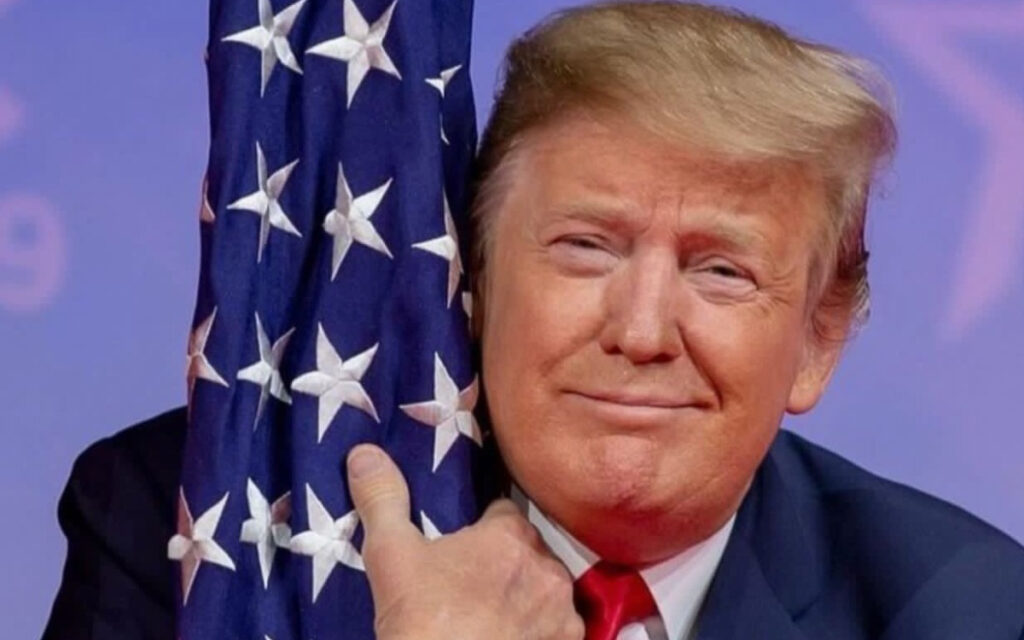
Trump sits on the precipice of a resurgence achieved only one time. Pictured: Former President Donald Trump. Photo Credit: Donald Trump Jr./X.
The first of this two-part series examined the women’s vote and explored the history of the suffragette movement. The first installment provided a survey of some of the leading figures and the events that led to women securing the vote in 1920 and the subsequent effect of this important demographic in elections since. The overarching theme of the article emphasized Kamala Harris’s potentially historic rise to the presidency as the first woman chief executive and how women supporters could help her win. This second part of the series will review the historical nature of former president Donald Trump’s victory if he were to reclaim the office he lost in 2020 to President Joe Biden.
Only six men before Trump sought to regain the presidency after serving in the office. Of the six men, only Grover Cleveland successfully recovered his former post. The first to try was Martin Van Buren, the eighth president who had served as Andrew Jackson’s vice-president. Van Buren won the office in his own right in 1836 but lost to William Henry Harrison in 1840. By 1848 Van Buren once again had eyes on the presidency and became leader of a third party labelled the Free Soilers. The Free Soil Party preceded the Republican Party and wanted to block the expansion of slavery into the western territories of the United States. Van Buren managed to win about 10 per cent of the vote, giving, in many eyes, the victory to the pro-slavery Whig candidate, Zachary Taylor.
The second man to attempt a restoration was Millard Fillmore, the man who succeeded Zachary Taylor in 1850 when the famous General died after a Fourth of July party. Fillmore completed Taylor’s term but a badly divided Whig Party chose to nominate General Winfield Scott. Fillmore ran instead for the Whig-American Party and earned 21 per cent of the vote, even securing the electoral votes of Maryland while losing badly to Democrat James Buchanan who won the presidency.
After serving two terms as president, leading the Republican Party to victory in 1868 and 1872, Ulysses S. Grant retired and undertook a global tour, returning to the United States in 1879. By 1880, bored and interested in returning to his former office, Grant had his men place his name in nomination at the Republican Convention in Chicago. Needing 378 votes, Grant earned 304 on the first ballot but could not grow that advantage. After 36 ballots the convention nominated a compromise candidate, James Garfield of Ohio. Garfield went on to win the election with Grant’s support but was assassinated less than a year after assuming the presidency.
The only man to successfully overcome the odds and return to the presidency, Grover Cleveland served two terms non-consecutively and won his party’s nomination three straight times. Trump hopes to accomplish this himself, but Cleveland won the popular vote all three times, losing the electoral college in 1888. A Democrat, Cleveland held many policy positions that would align with the Republican Party today including fiscal conservatism and government reform. In 1884 Cleveland defeated the Republican nominee James Blaine in a closely contested election. Winning the swing states of New York (by 1,200 votes), New Jersey, Connecticut, and Indiana Cleveland earned 219 electoral votes to Blaine’s 182. By 1888 Cleveland had battled Congress on numerous issues including tariffs. As a Democrat, he sided with most in his party and sought less protectionist policies. He also favoured a more isolationist foreign policy and wanted a strong military with modern equipment and updated fortification around the United States’ coasts.
Cleveland’s personal life also attracted attention. As a long-term bachelor, he had been in the company of many women, one of whom claimed he had fathered her child. Cleveland did not dispute the claim and paid the woman support, instructing campaign aids to tell the truth about the matter if asked. During his first term in office Cleveland met and married Francis Folsom. Cleveland was 49 and Folsom was 21. They married in 1886, the only presidential wedding held at the White House.
In the 1888 election, Cleveland faced Republican Benjamin Harrison. The four swing states from 1884 remained, but Cleveland could only win two, losing his home state of New York and Indiana. Though he won the popular vote, Cleveland lost the electoral vote 233-168. He returned to private life but by 1892 his continued presence in national politics made him a leading contender for the Democratic nomination. He faced opposition from Senator David Hill of New York, but Cleveland managed a first-ballot victory at the convention in Chicago. He would face Harrison in an unprecedented matchup of a former president versus a sitting president. Cleveland won easily, due to the tariff issue now favouring the former president’s views. Cleveland won a popular vote plurality and an electoral vote majority, defeating Harrison 46 per cent to 43 per cent and scoring 277 electoral votes to Harrison’s 145. Cleveland served a full term before retiring from office in 1897 upon the inauguration of William McKinley. He had not sought the nomination of his party in 1896.
In 1901 McKinley was assassinated and Theodore Roosevelt succeeded him. Roosevelt completed McKinley’s term and won a term outright in 1904 declaring he would not seek another term. Almost immediately he regretted saying it, but stood by the statement, leaving the presidency in 1909 for William Howard Taft. After a long time out of the country on a hunting safari, Roosevelt returned to find Taft undoing some of his legislation and not working hard to further his accomplishments. He formed the Bull Moose Party in 1912 to run against Taft and Democrat Woodrow Wilson. The candidacy assured Wilson a large victory as the Republican side was divided. Winning 27.5 per cent of the vote, Roosevelt captured 88 electoral votes, finishing second, but far behind Wilson’s 435 electoral votes. Rumours abounded that Roosevelt, still only 60, would run again in 1920, but emotionally distraught about his son’s death in World War One, Teddy died in 1919.
Before the Trump effort, one last former president made a hobbled attempt to return to the ring. Herbert Hoover, president from 1929-1933 felt that by 1940 his reputation had recovered and he could overtake Franklin Roosevelt, the man who had defeated him in 1932. Hoover could only muster a few delegates at the Republican convention in Philadelphia, hanging around for five ballots but never getting close to the top. Wendell Wilkie went on to win the nomination and lose badly to Franklin D. Roosevelt, who won an unprecedented third term.
That brings us to Trump, the seventh man to attempt a comeback. He sits on the precipice of a resurgence achieved only one time. If he succeeds, like Vice President Kamala Harris, he will overcome the past. Regardless of who wins on Nov. 5, the 2024 election will become an event with a historical footprint, producing the first female president or the first president to serve non-consecutive terms since the 19th century.

Dave Redekop is a retired elementary resource teacher who now works part-time at the St. Catharines Courthouse as a Registrar. He has worked on political campaigns since high school and attended university in South Carolina for five years, where he earned a Master’s in American History with a specialization in Civil Rights. Dave loves reading biographies.






